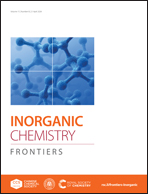Recent progress in aluminum anodes for high-performance rechargeable aqueous Al-ion batteries
Abstract
The growing market for electric vehicles and upcoming grid-scale storage systems is spurring the development of renewable energy storage technologies. Rechargeable aqueous aluminum-ion batteries (AIBs) are considered ideal for large-scale energy storage because of their cost-competitiveness, simplicity of manufacturing, eco-friendliness, high intrinsic safety, and high theoretical energy density. In addition, AIBs use aluminum as a raw material, which is the most abundant metal in the Earth's crust. However, metallic aluminum anodes exhibit poor thermodynamic stability in solutions because of self-corrosion, surface passivation, and hydrogen precipitation reactions. These factors considerably limit their electrochemical performance and impede the further development of AIBs. This review discusses the recent advances in the anode materials used in AIBs. We first briefly describe the energy storage mechanisms and challenges faced by various AIB anodes, including aluminum metal anodes, alloy anodes, and intercalated anodes. Subsequently, we summarize the interactions between the structures and reaction mechanisms of different anode materials, which have been used to prevent the passivation and corrosion of metallic aluminum anodes. Finally, we present the key challenges and future research perspectives for optimizing aluminum anodes to enhance the performance of AIBs.

- This article is part of the themed collection: 2024 Inorganic Chemistry Frontiers Review-type Articles


 Please wait while we load your content...
Please wait while we load your content...